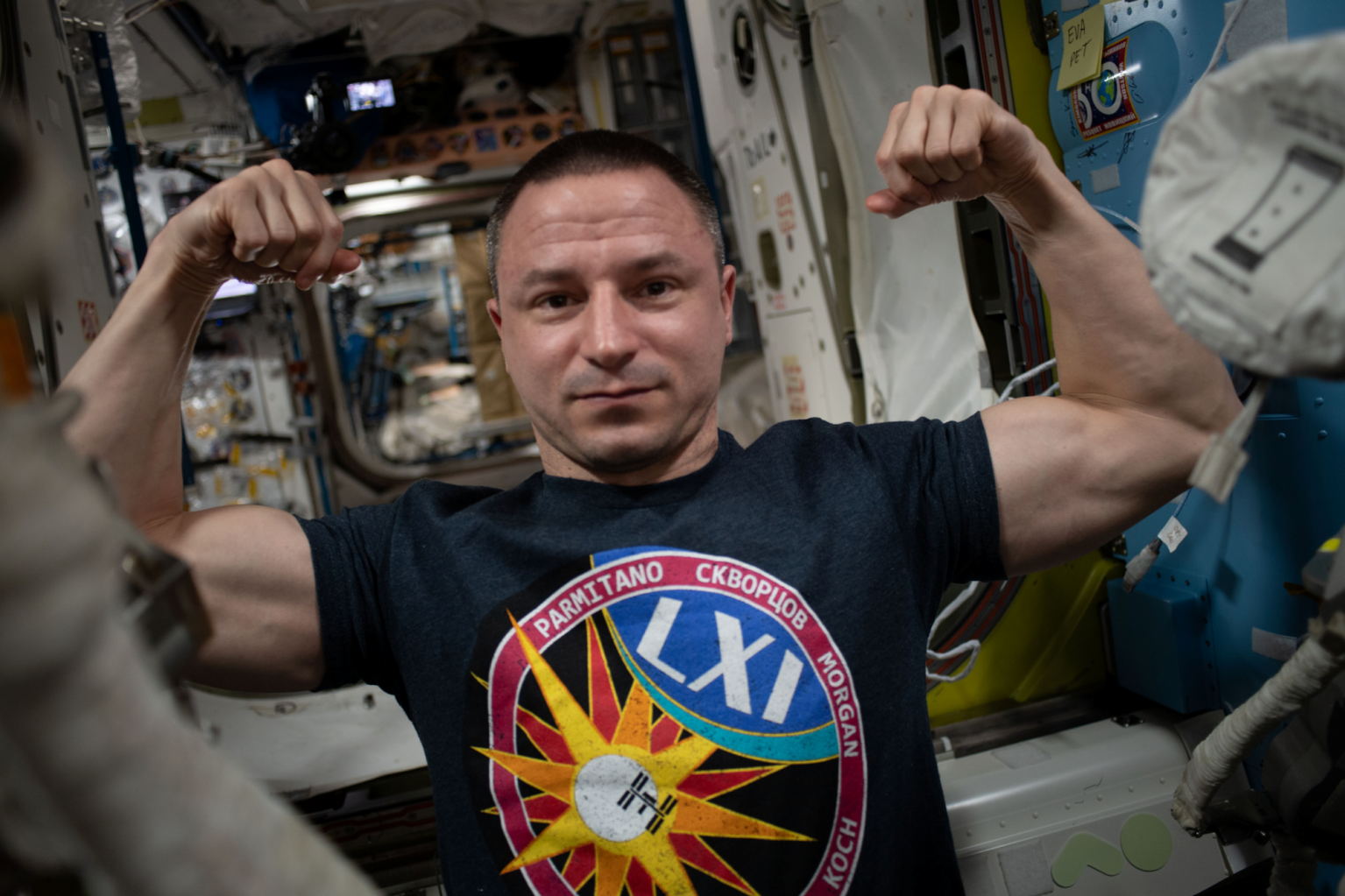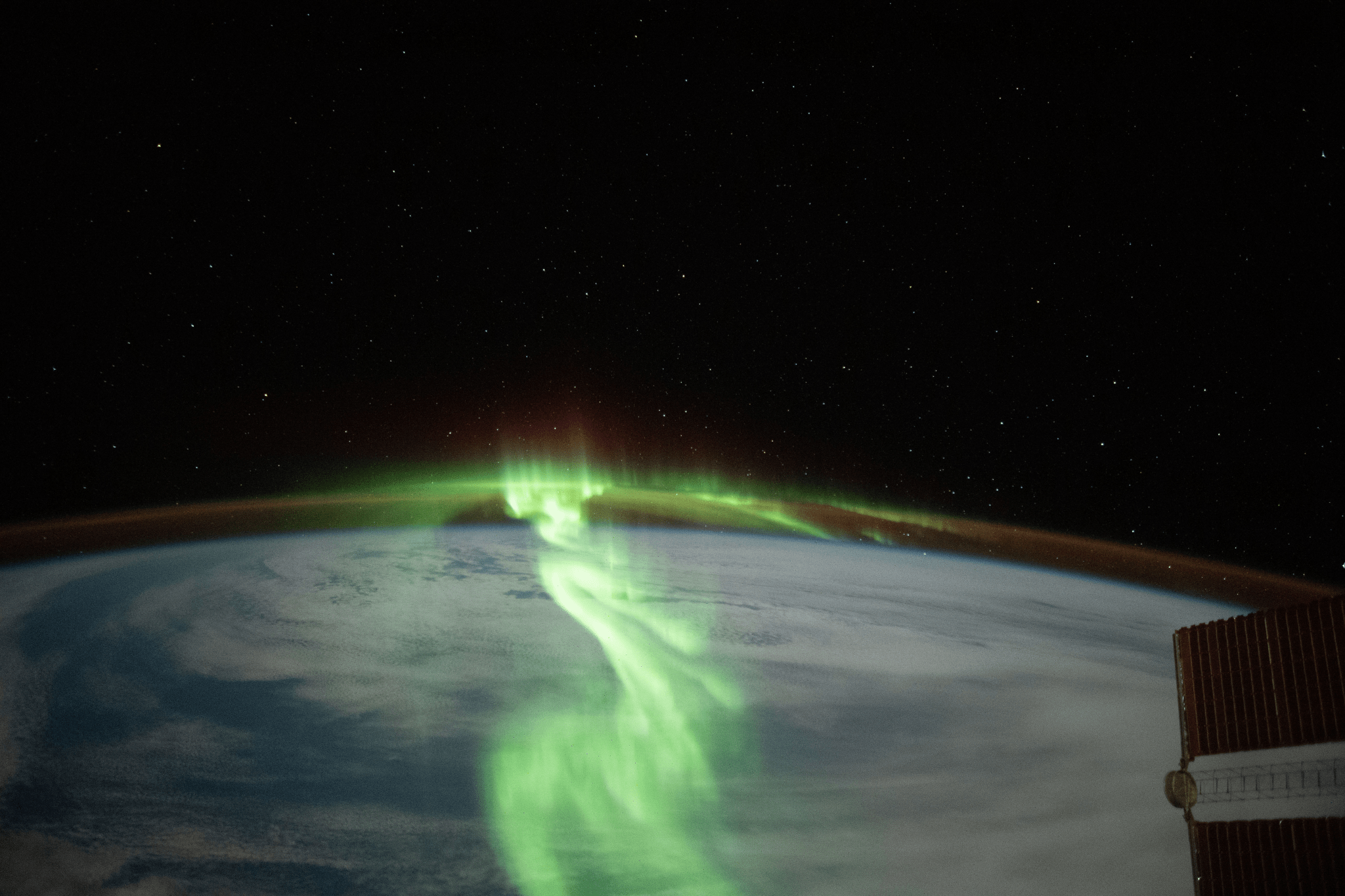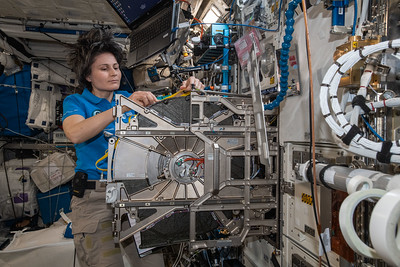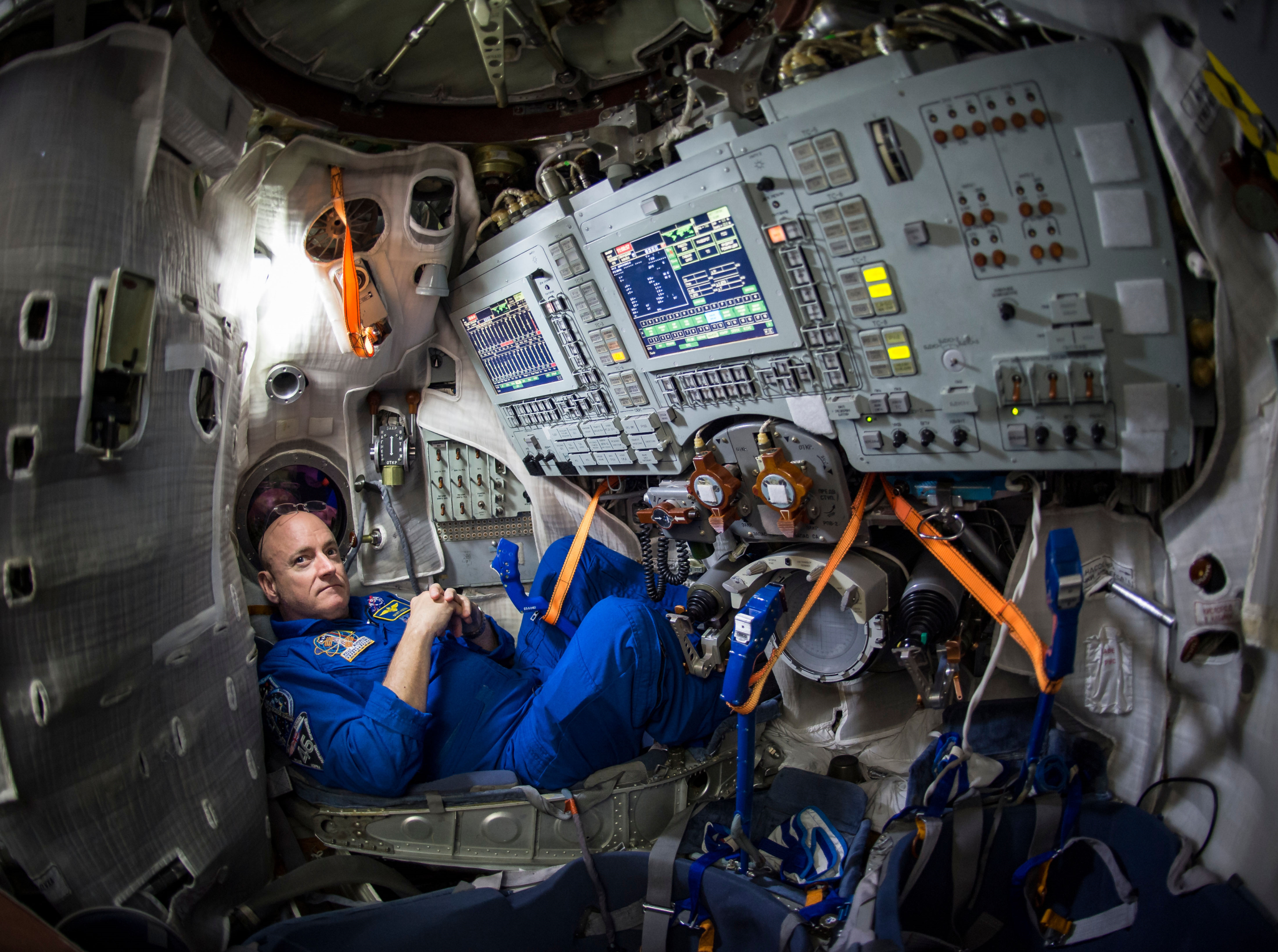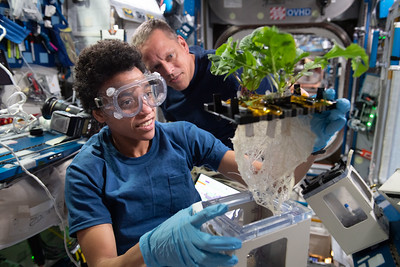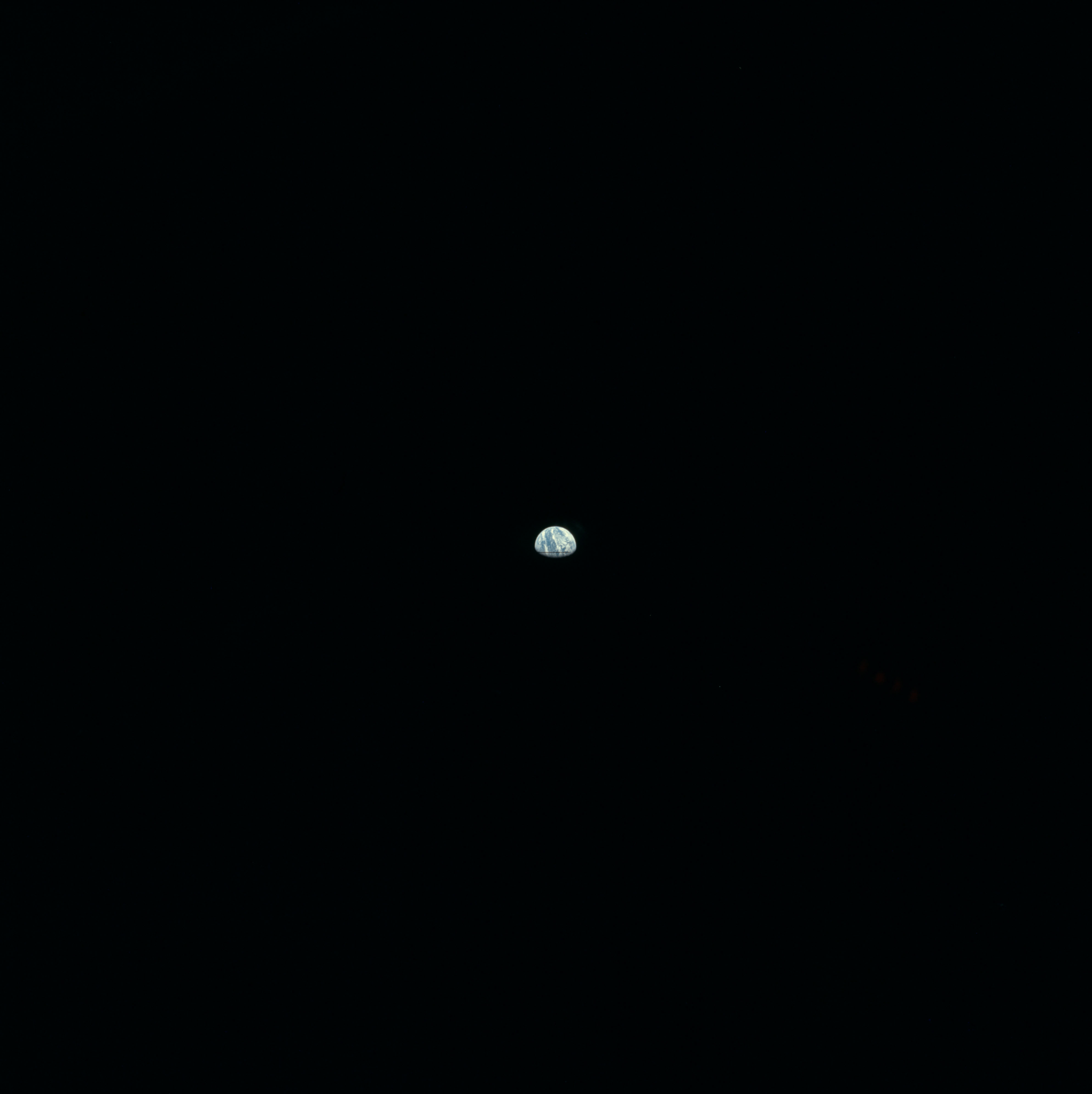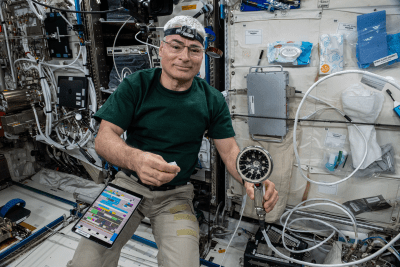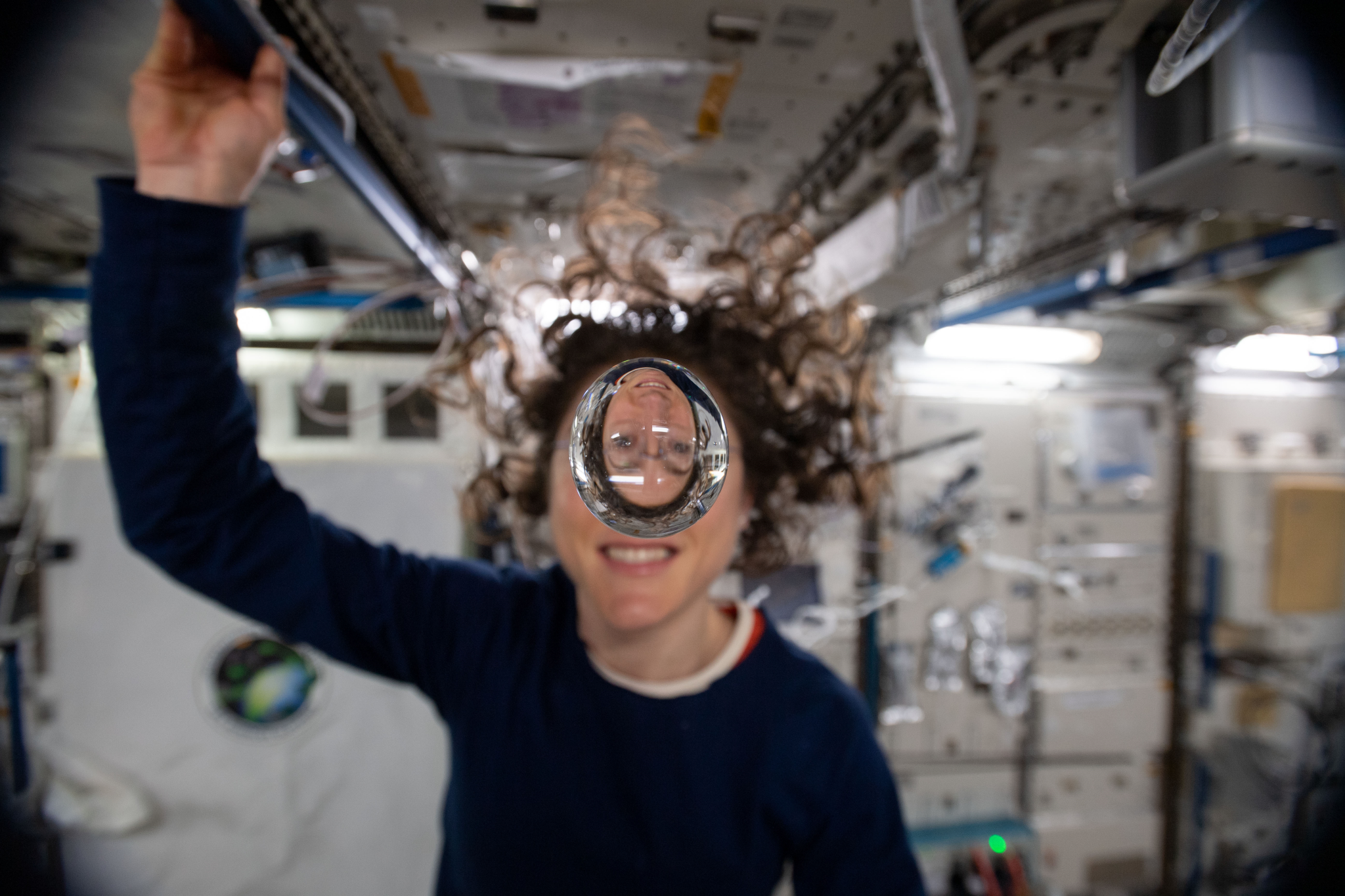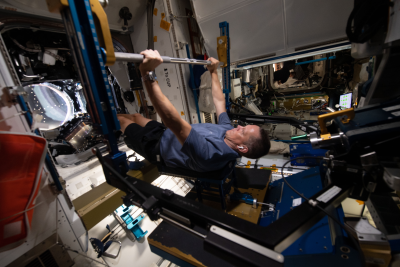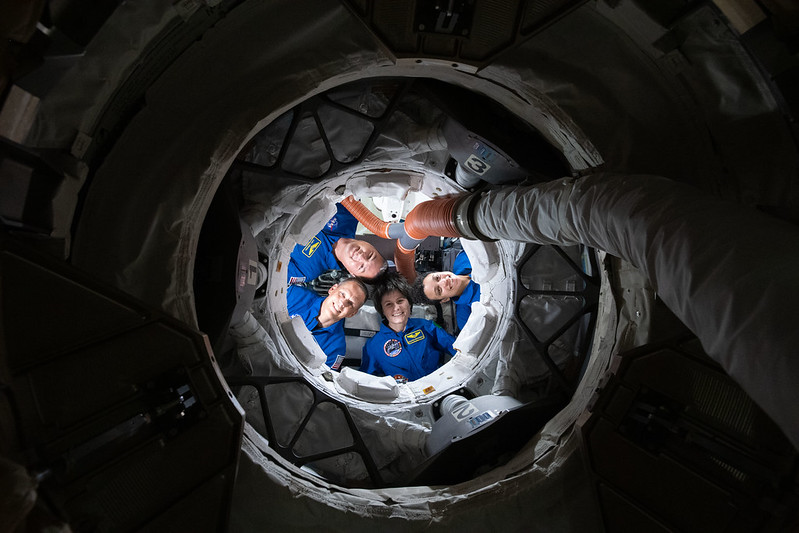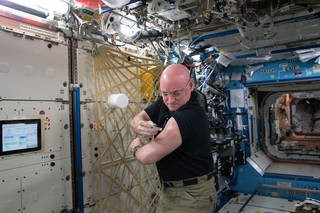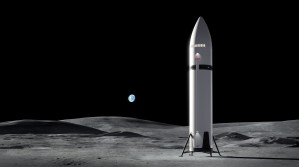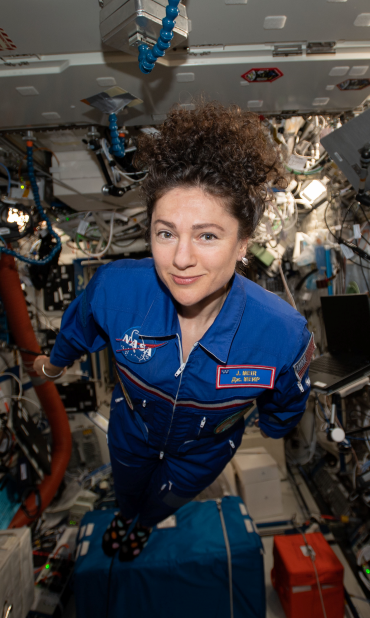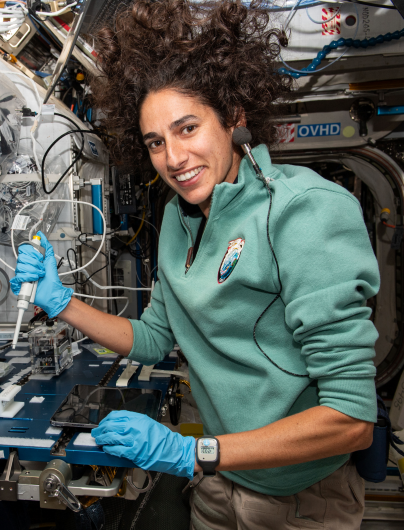For more than 50 years, NASA’s Human Research Program (HRP) has studied what happens to the human body in space. Researchers are using what they learn to design procedures, devices, and strategies to keep astronauts safe and healthy throughout their missions.
NASA engineers use the lessons learned to better design spacecraft and improve the fit and functions of spacesuits. The research also aids in the development and assessment of medical standards, physical fitness programs and standards, physiological and psychological adaptation training, sensorimotor training, and nutritional health protocols.
Understanding the effects of spaceflight on humans is essential as astronauts move from the International Space Station in low-Earth orbit to deep space destinations on and around the Moon, and beyond. With the Artemis program, NASA will land the first woman and next man on the Moon using innovative technologies to explore more of the lunar surface than ever before, gathering new data while keeping astronauts healthy and safe.
NASA is particularly interested in investigating how the body reacts to long-duration spaceflight as the agency plans for extended missions on the Moon and Mars. Scott Kelly and Christina Koch were the first American astronauts to spend nearly one year in space onboard the space station, twice the previous average. Scott, Christina, and seven other astronauts have spent more than 200 days in space during a single spaceflight.
In addition to spending almost a year in space, Scott was involved in the unique Twins Study. Scott participated in several biomedical studies onboard the space station while his identical twin brother, retired astronaut Mark Kelly, stayed on Earth as a control subject, someone who provides a basis of comparison.
The study provided valuable data about what happened to Scott, physiologically and psychologically, as compared to his brother Mark. Their contribution to science helped generate data that researchers will use for decades to come.
NASA is planning more dedicated extended-duration research on the space station. The studies are expected to shed light on how the body adapts to living in the spaceflight environment for various longer time periods, which will be pivotal for future deep space missions.
What exactly happens to the body in space and what are the risks? Are the risks the same for astronauts who spend six months on the space station versus those who may be away on a Mars mission for years?
The simple answer is: No. NASA is researching risks for Mars missions which are grouped into five human spaceflight hazards related to the stressors they place on the body. These can be summarized with the acronym “RIDGE,” short for Space Radiation, Isolation and Confinement, Distance from Earth, Gravity fields, and Hostile/Closed Environments.
Space Radiation
On Earth, we are shielded by the planet’s magnetic field and atmosphere from the majority of particles that make up the space radiation environment. Even so, everyone on Earth is exposed to low levels of radiation every day, from the food we eat to the air we breathe.
In space, astronauts are exposed to varied and increased levels of radiation that are different from those on Earth. Three major sources contribute to the space radiation environment: particles trapped in Earth’s magnetic field, solar energetic particles from the Sun, and galactic cosmic rays.
A big challenge in reducing the risks of radiation exposure is that some space radiation particles (especially galactic cosmic rays) are difficult to shield against. Exposure to increased radiation can be associated with both short- and long-term health consequences, depending on how much total radiation astronauts experience and the time frame in which they experience that exposure.
Increased risk of cancer and degenerative diseases, such as heart disease and cataracts, have been observed in human populations exposed to radiation on Earth. Health risks for astronauts from radiation exposure in space are mainly driven by long-term impacts.
Additionally, animal and cellular research indicate that the type of radiation in the space environment has a larger impact on health outcomes compared to the radiation experienced on Earth. Not only will astronauts be exposed to more radiation in space than on Earth, but the radiation they are exposed to could pose increased risks.
The Key: The current strategy to reduce the health risks of space radiation exposure is to implement shielding, radiation monitoring, and specific operational procedures. Compared to typical six-month space station missions, later Moon and Mars missions will be much longer on average. Consequently, the total amount of radiation experienced and associated health risks may increase.
NASA is developing new radiation detectors to monitor and characterize the radiation environment, which will provide better estimates of the dose and type of radiation to which the crews are exposed. Scientists and engineers are optimizing and implementing operational procedures that use available vehicle stowage and materials to reduce radiation exposure effectively.
To investigate the health risks of space radiation exposure beyond low-Earth orbit, NASA supports research that analyzes the biological effects of simulated cosmic rays at ground-based research facilities. Research at these facilities helps NASA understand and reduce the risk of space radiation, ensure proper measurement of the doses that astronauts receive on the space station and in future spacecraft, and develop advanced materials that improve radiation shielding for future missions.
Studies of radiation-exposed human cohorts are also being conducted to estimate the health risks in populations relevant to astronauts.
Isolation and Confinement
Expedition crews selected for a stay onboard the space station are carefully chosen, trained, and supported to ensure they will be able to work effectively as a team for the duration of their six to 12-month missions. Crews for a Moon or Mars mission will undergo even more careful assessment, selection, and preparation since they will travel farther and potentially for longer than previous humans in an isolated and confined environment, with only a few other people. Additionally, crews will likely be international and multi-cultural, making cross-cultural sensitivity and team dynamics paramount to mission success.
Ensuring astronauts get quality sleep is also important; otherwise, their internal biological clocks, or circadian rhythm, might be altered by factors like different dark and light cycles, a small and noisy environment, the stress of prolonged isolation and confinement, and a 37-minute extended day on Mars.
It is important to prepare for the fatigue astronauts may experience during spaceflight, given that there will be times with heavy workloads and shifting schedules. To prevent crew boredom, NASA considers the kinds of activities in which the astronauts will participate during a multi-year round trip to Mars.
Communication and understanding among crew members are vital to the success of the mission, and changes in morale and motivation are possible as the mission unfolds. This may relate to reduced stimulation, the longing for loved ones, or feeling unable to assist with family emergencies back on Earth, regardless of how long the mission lasts.
Using spaceflight analogs on Earth, NASA’s research has revealed that both the duration and type of confined and isolated experience are important to consider. The more restricted the space, and the less contact with people outside the environment, the more likely humans are to develop behavioral or cognitive conditions or psychiatric disorders.
The Key: NASA has been studying people in isolated and confined environments for years, and has developed methods and technologies to counteract possible problems.
NASA scientists are using devices, such as actigraphy, that help assess and improve sleep and alertness by recording how much people move and how much ambient light is around them. New lighting, spurred by the development of Light-Emitting Diode (LED) technology, is used on the space station to help align astronaut’s circadian rhythms and to improve sleep, alertness, and performance.
A 10-minute self-test of vigilance and attention assesses the effect of fatigue on performance. Astronauts write in journals as a safe place to vent frustrations and provide researchers a tool to study behavioral issues that are on the minds of crew members who are living and working in isolation and confinement.
Researchers are also looking into using virtual reality to simulate relaxing environments to help improve the mood of crews in isolation. Engaging in relevant, meaningful activities, including learning a language or learning new medical skills, could help ward off depression and boost morale. Crews may even tend to a space garden, which could have positive behavioral health benefits in addition to providing a fresh source of food and helping to purify the air.
Researchers are using Earth-based analogs to investigate how much privacy and living space will be needed on longer missions where crew members will be restricted in a relatively small spacecraft together. NASA is also determining strategies to formulate the best crew by studying individual and team attributes, composition, and dynamics.
Distance from Earth
The space station orbits 240 miles above Earth. The Moon is 1,000 times farther from Earth than the space station. In contrast, Mars is on average 140 million miles from Earth. With a communication delay of up to 20 minutes one-way while on Mars, astronauts must be able to solve problems and identify solutions as a team without help from NASA’s mission control.
The types of food and medicine to be packed for a multi-year trip without access to a grocery store or pharmacy are also important to consider. Unlike space station crews, which regularly receive supplies from cargo flights from Earth, astronauts going to Mars will have to bring all of the food, equipment, and medical supplies they need.
The Key: NASA is using its human spaceflight experience on the space station to figure out what types of medical events happen in space over time and what types of skills, procedures, equipment, and supplies are needed so that they will have a good idea of what to pack for future missions to the Moon and Mars.
Space station astronauts already receive medical training before and during space missions that teach them how to respond to health problems as they arise. For example, astronauts learn how to use onboard space station equipment to produce an intravenous (IV) solution from purified water, which can be used for medical administration.
Crew members also perform ultrasound scans on each other to monitor organ health. If one crew member becomes sick during the mission, crews are ready to perform laboratory testing to help make the right diagnosis and guide treatment.
NASA is working on developing a medical data architecture for spacecraft that enables the capabilities of clinical decision support tools, which could use artificial intelligence and machine learning to further help diagnose and treat various illnesses. Researchers are also looking into the role that virtual assistants could play to help crews identify and respond to spaceflight anomalies quickly for more distant missions.
Additionally, the agency is studying and improving food formulation, processing, packaging, and preservation systems to ensure the nutrients remain stable and the food remains acceptable for years. Space-resilient medications and packaging systems that preserve the integrity of pharmaceuticals for long-duration missions are another significant part of NASA’s research.
Gravity Fields
Astronauts will encounter three different gravity fields on a Mars mission. On the six-month trek between the planets, crews will be weightless. While living and working on Mars, crews will be in approximately one-third of Earth’s gravity. Finally upon returning home, crews will have to readapt to Earth’s gravity.
Transitioning from one gravity field to another is trickier than it sounds. It affects spatial orientation, head-eye and hand-eye coordination, balance, and locomotion, with some crew members experiencing space motion sickness.
Landing a spacecraft on Mars could be challenging as astronauts adjust to the gravity field of another celestial body. When shifting from weightlessness to gravity, astronauts may experience post-flight orthostatic intolerance where they are unable to maintain their blood pressure when standing up, which can lead to lightheadedness and fainting.
NASA has learned that without Earth’s gravity affecting the human body, weight-bearing bones lose on average 1% to 1.5% of mineral density per month during spaceflight. After returning to Earth, bone loss might not be completely corrected by rehabilitation; however, their risk for fracture is not higher. Without the proper diet and exercise routine, astronauts also lose muscle mass in microgravity faster than they would on Earth.
Moreover, the fluids in the body shift upward to the head in microgravity, which may put pressure on the eyes and cause vision problems. If preventive or countermeasures are not implemented, crews may experience an increased risk of developing kidney stones due to dehydration and increased excretion of calcium from their bones.
The Key: By analyzing how the body changes in weightlessness and after returning to Earth’s gravity, NASA is developing protective measures against these changes for a Mars mission.
Functional task testing is in place to help detect and improve balance control after landing on a gravitational surface. Fine motor skill testing is done to detect any changes in the ability of astronauts to interact with computer-based devices.
Distribution of the fluids in the body is closely monitored to help evaluate any connection to changes in vision. Compression cuffs worn on the thighs help keep the blood in the lower extremities to counteract those fluid shifts. A lower-body negative pressure device could help draw fluids from the head into the legs as well.
Back pain, which some astronauts have reported experiencing during spaceflight, is monitored by obtaining spinal ultrasounds. Muscle size and bone density are assessed for deterioration using MRI and high-resolution imaging techniques, before and after flight. Crew members perform periodic fitness self-evaluations to help researchers better understand the decline in heart function that can occur during spaceflight.
Medicines that NASA is studying, such as potassium citrate, may help combat the physiological change that could increase the risk of developing kidney stones. Bisphosphonate medications have been shown in NASA studies to be effective in preventing bone loss.
NASA has also designed an efficient way to collect and measure how much urine a crew member produces in space, which is essential to human research since it reveals key information about a person’s health. For example, researchers can analyze different levels of certain substances in an astronaut’s urine to determine whether they are at risk of developing a kidney stone in space, and make modifications to the diet, exercise routine, and water intake as preventive measures.
Aerobic and resistive exercise has been shown to keep the heart healthy, bones and muscles strong, the mind alert, as well as maintain a more positive outlook, and may even help with balance and coordination. Software-generated workout partners could be used to help motivate astronauts to exercise regularly for longer space missions. NASA has even completed a joint Earth-based bed rest study to determine whether centrifuge artificial gravity may be an effective way to counter the physiological effects of weightlessness.
Hostile/Closed Environments
NASA has learned that the ecosystem inside the spacecraft plays a big role in everyday astronaut life in space. Microbes can change characteristics in space, and micro-organisms that naturally live on the human body are transferred more easily from person to person in closed habitats, such as the space station. Stress hormone levels are elevated and the immune system is altered, which could lead to increased susceptibility to allergies or other illnesses.
Earth-based analogs do not perfectly simulate the spaceflight environment, making them insufficient for studying on the ground how human immune systems react in space. However, NASA-funded Antarctic analog studies could provide insight into how certain spaceflight stressors may affect the human immune system. What is known is that spaceflight changes the immune system, although crews do not tend to get sick upon returning to Earth. Even though astronauts’ acquired immunity is intact, more research is needed into whether spaceflight induced altered immunity may lead to autoimmune issues, in which the immune system mistakenly attacks the healthy cells, organs, and tissues present in the body.
Beyond the effects of the environment on the immune system, every inch and detail of living and working quarters must be carefully thought-out and designed. No one wants their house to be too hot, too cold, cramped, crowded, loud, or not well lit, and no one would enjoy working and living in such a habitat in space either.
The Key: NASA is using technology to monitor the air quality of the space station to ensure the atmosphere is safe to breathe and not contaminated with gases, such as formaldehyde, ammonia, and carbon monoxide. Thermal Control Systems function to maintain temperatures of the space station and keep astronauts comfortable.
Blood and saliva samples are analyzed to identify changes in the immune system and the reactivation of latent viruses during spaceflight. NASA uses advanced molecular techniques to evaluate the risk of microbes that may cause illness for crew members. Various parts of the body and the space station are swabbed regularly for analysis of the microbial population that inhabits the environment. Crews change out air filters, clean surfaces, and treat the water to prevent illnesses that may result from the accumulation of contaminants.
Astronauts are advised to get a flu shot to boost their immunity and are quarantined before their missions to avoid catching any sort of illness before launch. During the Twins Study and One-Year Mission, Scott Kelly administered a flu vaccine to himself while his brother received his on Earth. The immunization proved to work as well in space as it does on Earth, which is a good finding for longer missions to the Moon and Mars.
Living quarters and work environments are carefully planned and evaluated to ensure that designs balance comfort and efficiency. Lighting onboard the space station is similar to what would be experienced naturally on Earth, thanks to the new LED lighting system.
NASA is taking action on all of these risks and working to solve the challenges of human spaceflight with some of the most brilliant minds in their fields. The results garnered from laboratories, ground analogs, and space station missions will provide more insight into these adaptations and present a stepping stone for longer missions.
On upcoming Artemis missions to lunar orbit and the surface of the Moon, even more data will be collected as this work continues. On future longer duration missions to the Moon and Mars, astronauts will benefit from years of research that will ensure they will be able not just to survive, but thrive on their spacefaring missions.
Click here for an infographic summarizing the risks of human spaceflight and the safeguards against them.
_______
NASA’s Human Research Program, or HRP, pursues the best methods and technologies to support safe, productive human space travel. Through science conducted in laboratories, ground-based analogs, and the International Space Station, HRP scrutinizes how spaceflight affects human bodies and behaviors. Such research drives HRP’s quest to innovate ways that keep astronauts healthy and mission-ready as space travel expands to the Moon, Mars, and beyond.



























